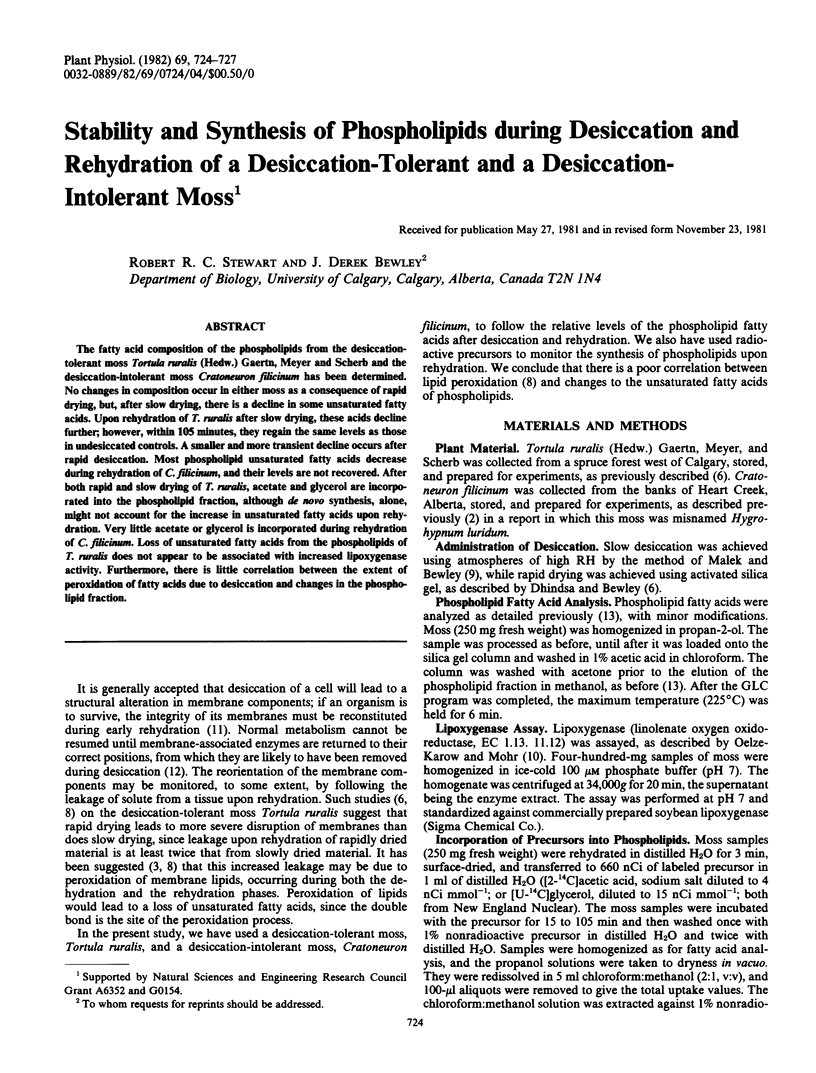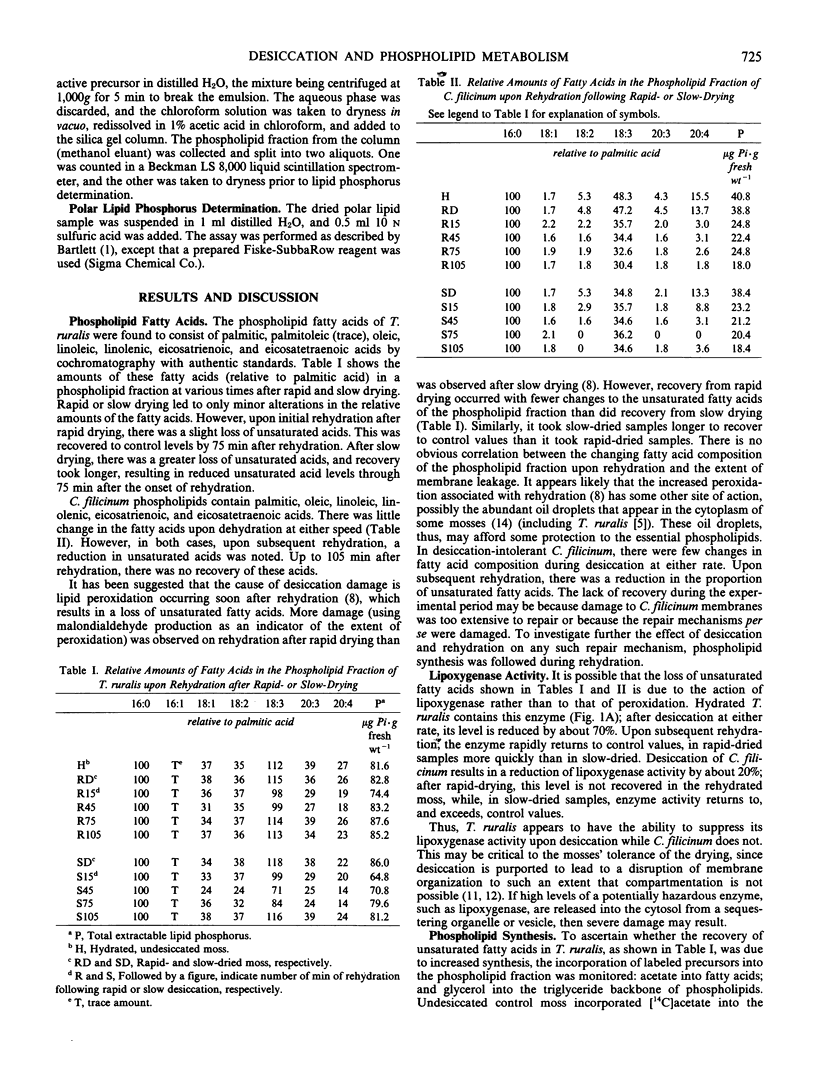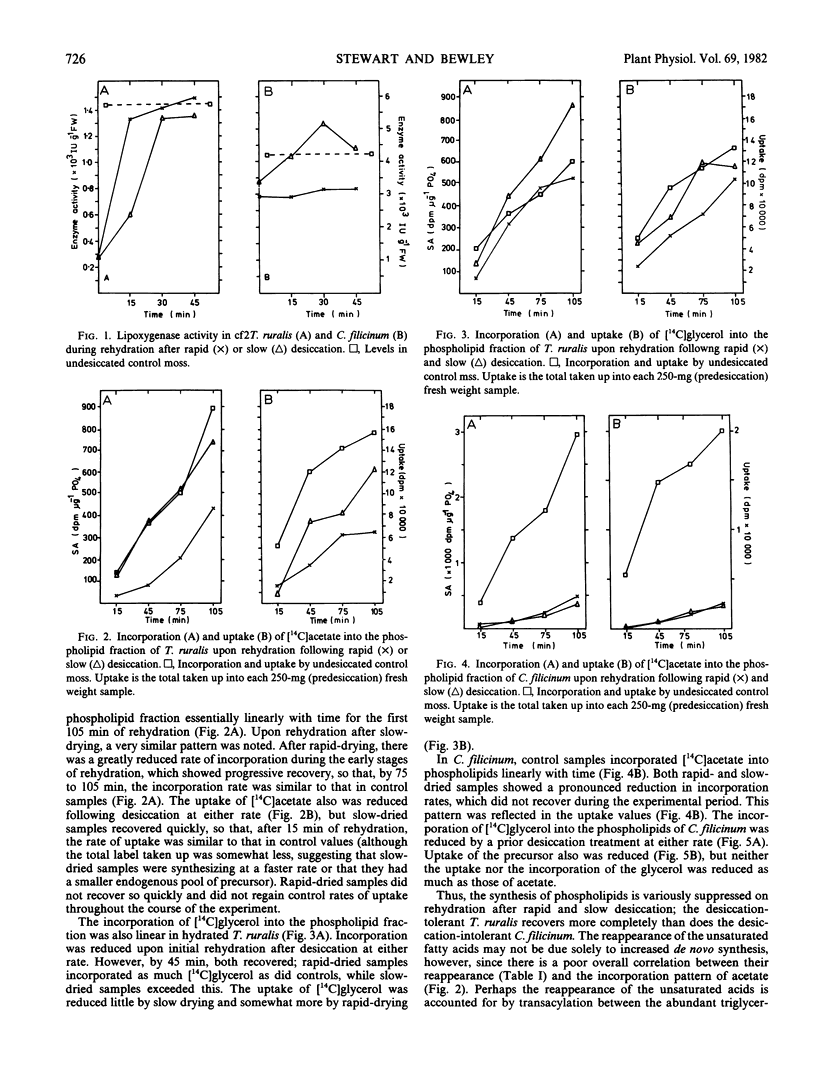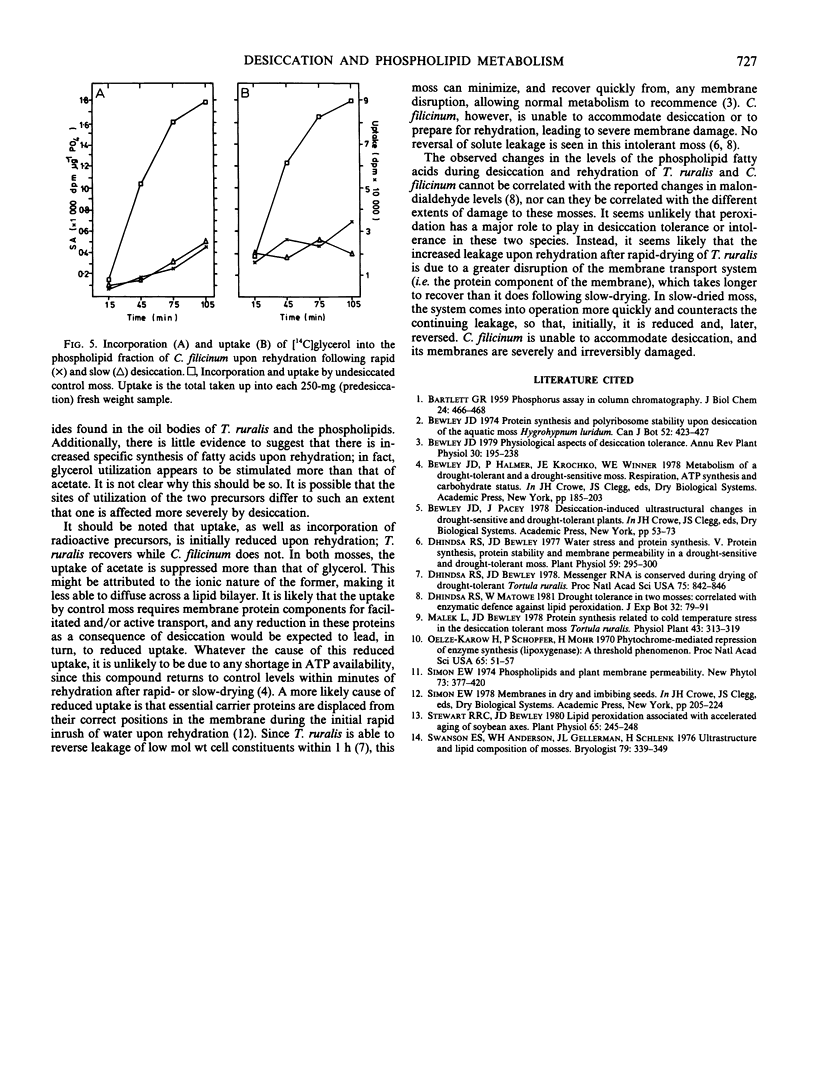Abstract
The fatty acid composition of the phospholipids from the desiccation-tolerant moss Tortula ruralis (Hedw.) Gaertn, Meyer and Scherb and the desiccation-intolerant moss Cratoneuron filicinum has been determined. No changes in composition occur in either moss as a consequence of rapid drying, but, after slow drying, there is a decline in some unsaturated fatty acids. Upon rehydration of T. ruralis after slow drying, these acids decline further; however, within 105 minutes, they regain the same levels as those in undesiccated controls. A smaller and more transient decline occurs after rapid desiccation. Most phospholipid unsaturated fatty acids decrease during rehydration of C. filicinum, and their levels are not recovered. After both rapid and slow drying of T. ruralis, acetate and glycerol are incorporated into the phospholipid fraction, although de novo synthesis, alone, might not account for the increase in unsaturated fatty acids upon rehydration. Very little acetate or glycerol is incorporated during rehydration of C. filicinum. Loss of unsaturated fatty acids from the phospholipids of T. ruralis does not appear to be associated with increased lipoxygenase activity. Furthermore, there is little correlation between the extent of peroxidation of fatty acids due to desiccation and changes in the phospholipid fraction.
Full text
PDF



Selected References
These references are in PubMed. This may not be the complete list of references from this article.
- BARTLETT G. R. Phosphorus assay in column chromatography. J Biol Chem. 1959 Mar;234(3):466–468. [PubMed] [Google Scholar]
- Dhindsa R. S., Bewley J. D. Messenger RNA is conserved during drying of the drought-tolerant moss Tortula ruralis. Proc Natl Acad Sci U S A. 1978 Feb;75(2):842–846. doi: 10.1073/pnas.75.2.842. [DOI] [PMC free article] [PubMed] [Google Scholar]
- Dhindsa R. S., Bewley J. D. Water Stress and Protein Synthesis: V. Protein Synthesis, Protein Stability, and Membrane Permeability in a Drought-sensitive and a Drought-tolerant Moss. Plant Physiol. 1977 Feb;59(2):295–300. doi: 10.1104/pp.59.2.295. [DOI] [PMC free article] [PubMed] [Google Scholar]
- Oelze-Karow H., Schopfer P., Mohr H. Phytochrome-mediated repression of enzyme synthesis (lipoxygenase): a threshold phenomenon. Proc Natl Acad Sci U S A. 1970 Jan;65(1):51–57. doi: 10.1073/pnas.65.1.51. [DOI] [PMC free article] [PubMed] [Google Scholar]
- Stewart R. R., Bewley J. D. Lipid peroxidation associated with accelerated aging of soybean axes. Plant Physiol. 1980 Feb;65(2):245–248. doi: 10.1104/pp.65.2.245. [DOI] [PMC free article] [PubMed] [Google Scholar]


